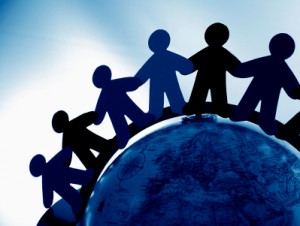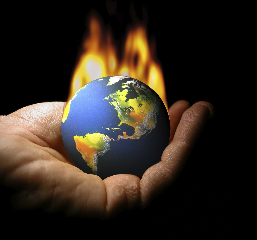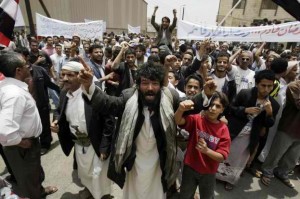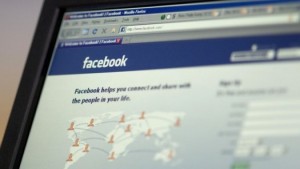El Fondo Monetario Internacional (FMI)- la organización internacional que supervisa el sistema financiero global- eligió recientemente a un nuevo Director Administrativo (DA), debido a que Dominique Strauss Kahn (antiguo DA) resignó. Los dos candidatos al puesto eran la ministra de ecnonomía de Francia, Christine Lagarde, y el director del Banco Central de México, Agustín Carstens. Ambos candidatos tenían curriculums excelentes y parecían ser altamente competentes para el puesto en el FMI. Lagarde fue elegida.
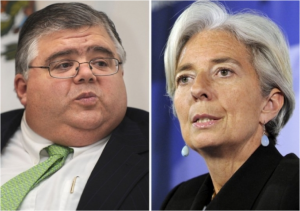
Quienquiera Lagarde (una mujer) o Cartens (originario de un pais en via de desarollo) darían un nuevo giro a la institutición, ya que desde su fundación, el Director Administrativo del IMF ha sido un hombre Europeo. Pero para entender que es lo que la elección de uno de los dos representa, debemos primero entender la institutición en la que trabajarán.
Para empezar, todos los miembros del FMI son países, no indivudos o partidos. Para ser un país miembro, debes de contribuir al FMI con una cierta cuota monetaria. La cuota es una cantidad de dinero con el cual el país contribuye a la totalidad de los recursos del fondo. De esta manera, el FMI puede ser pensado como una gran unión creditaria internacional que tiene como miembros a todos los países del mundo. En efecto, 187 paises son miembros, lo que incluye prácticamente al mundo entero. La cuota representa el poder de voto en el FMI. Entre más grande es la cuota de un país, más votos le son asignados.
Originalmente, el papel principal del FMI es promover la cooperación monetaria internacional, facilitar el crecimiento del intercambio internacional y mantener estables a las tasas de cambio.
Sin embargo, su papel rápidamente evolucionó para también ofrecer asistencia a los miembros que sufrían dificultades monetarias y de crecimiento económico. Por eso, el FMI también ofrece asistencia financiera y monetaria junto con el Banco Mundial.
El tamaño de la cuota de un país se define en función de la fuerza económica de este mismo. Actualmente, la cuota más grande es la de los Estados Unidos (16.8%). La siguiente más grande es de Japón, luego Alemania, Francia, y El Reino Unido (ver aqui). Controlando 16.8% del los votos, los EEUU es el único país en poseer un poder de veto en la institución. Por cosiguiente EEUU gozan de mayor autoridad. Puede usar el veto cuando hay decisiones (sobretodo las más importantes) que requieren el 85% de aprobación. Por ejemplo, cambiar las cuotas, es decir, el poder en la institución, requiere una mayoría de 85%, (por ende la aprobción de EEUU).
Todo el poder del FMI viene del Mesa de Gobernadores, compuesta generalmente de los ministros de finanzas y directores de banco central de los países miembros. Como este grupo sólo se reúne una vez al año, la gran parte del poder es delegada a un consejo mas pequeño, la Mesa Ejecutiva. Esta consiste de 24 directores. Los cinco miembros del FMI con la cuota más larga automáticamente escogen al director de la Mesa Ejecutiva. Como hay mas países miembros que directores en la mesa ejecutiva, muchos directores acaban respresentan mas de un país.
La Mesa ejecutiva trabaja en conjunto con el Director Administrativo (DA). La mesa ejecutiva es la que tiene que asignar al nuevo DA, por consiguiente es el consejo que ambos Carstens y Lagarde buscaron persuadir. Como dicho antes, los países con más importancia para persuadir son EEUU, Francia, Alemania, Japón y Reino Unido, ya que son los países que tienen la proporción más grande (ya que tienen las cuotas más grandes) del voto total. El marco legal en el que la votación tomo lugar hizo poco posible la selección del candidato basado únicamente en términos meritocráticos o hasta democráticos. En efecto, en el FMI dinero es poder, y el ganador será el candidato que represente mejor los intereses de los países con mayor poder de voto.
EEUU y Europa apoyaron a Lagarde por dos razones principales. Una es que actualmente los prestámos más largos del FMI están en Europa (Grecia, Irlanda y Portugal). Por otro lado históricamente ha habido un acuerdo tácito entre EEUU y Europa para que el director del FMI sea siempre Europeo y el director del Banco Mundial siempre Americano. Carstens se enfrentó en una competencia díficil, aun más porque los países en vía de desarollo (Brazil, Argentina, China, India), que lo podrían apoyar con mayor razon, se mantuvieron indecisos y no declararon prematuramente al candidato apoyarían.
De cualquier manera, que es lo que el puesto de AD representa? Por la manera en que el FMI esta estructurado, el AD tiene poco poder. El o Ella se reunirá con la Mesa Ejecutiva y la aconsejará, pero cada decisión ejecutiva seguirá estando en manos de la Mesa. Como los grandes inversionistas son los Estados Unidos y Europa, el fondo sigue siendo controlado por áquellos a los que ahora tiene que monitorear más cerca (Europeos). Entonces si el representante de un país como Estados Unidos, o Europa es negligente a las conclusiones y recomendaciones de una investigación del FMI, el AD (Cartens o Largade) no puede más que suspirar en frustación.
El mal funcionamiento de la institución tiene como causa también sus raíces históricas. El FMI se fundó en Bretton Woods, despúes de la Segunda Guerra Mundial. Como explicado previamente, es controlado por los países con las cuotas más largas. Sin embargo, el poder económico global ahora esta cambiando y las reglas del juego y de la institución deberían de ser cambiadas también. Los países en vía de desarollo necesitan tener una mejor representación y más poder en la toma de decisiones. Hasta ahora la tentativas para reformar son muy escasas (ver aqui).
Una cosa es segura. Mientras el IMF siga siendo manejado como un banco comercial, en donde el dinero es poder, solo representará los intereses de los países mas ricos. Esto ha causado la falla de muchos programas y ha hecho que el FMI no cumpla completamente con su papel original. Debido a que es una institución financiera global con una función necesario para el buen funcionamiento de la enconomía global de hoy, su renovación es necesaria.
Julia Naime is a research intern at the Sisgi group. She focuses in International Economics, Rural Development and Environmental Policies. She is a rising senior at New York University, majoring in Economics.
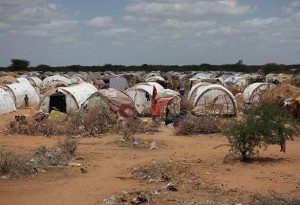 water, and medical supplies. The UNHCR itself is responsible for emergency assistance, like nutrition evaluation, sanitation, and protection. The problem? The U.N. hasn’t received nearly enough money to bring adequate aid and supplies to the refugees in Dadaab.
water, and medical supplies. The UNHCR itself is responsible for emergency assistance, like nutrition evaluation, sanitation, and protection. The problem? The U.N. hasn’t received nearly enough money to bring adequate aid and supplies to the refugees in Dadaab.



